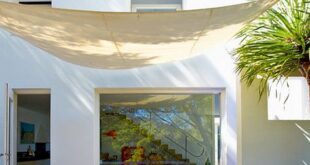When it comes to designing a small garden, there are several key principles to keep in mind in order to make the most of the space available. First and foremost, it’s important to carefully consider the layout of the garden and how each element will fit together. This might involve creating separate areas for different functions, such as a seating area, a vegetable patch, and a flower bed.
In a small garden, space-saving techniques can be particularly useful. Vertical gardening, for example, involves growing plants upwards rather than outwards, using structures like trellises, walls, or hanging baskets. This can help to maximize the amount of greenery in the garden without taking up valuable ground space. Similarly, raised beds can be a great way to add depth and interest to a small garden while also making it easier to tend to plants.
Another important aspect of small garden design is choosing the right plants. Opting for a mix of shrubs, perennials, and annuals can help to create a garden that looks good all year round, with different plants coming into bloom at different times. It’s also worth considering the size of each plant and how it will fit into the overall design of the garden. Compact, slow-growing plants are often a good choice for smaller spaces.
When it comes to hardscaping elements, such as pathways, patios, and garden furniture, simplicity is key in a small garden. Opting for clean lines, neutral colors, and minimalistic designs can help to create a sense of space and cohesion. It’s also worth considering the scale of these elements – choosing smaller, more streamlined furniture and pathways can help to make the garden feel less cluttered.
Lighting can also play a crucial role in small garden design, particularly if you want to make the most of the space in the evenings. Solar-powered lights, lanterns, and fairy lights can all help to create a cozy and inviting atmosphere, while also highlighting key features of the garden. Placing lights strategically can also help to create the illusion of more space by drawing the eye to different areas of the garden.
Ultimately, designing a small garden requires a balance of creativity and practicality. By carefully considering the layout, plants, hardscaping elements, and lighting, it’s possible to create a beautiful and functional outdoor space that makes the most of the available space. With a little bit of planning and creativity, even the smallest of gardens can be transformed into a peaceful and inviting oasis.
















